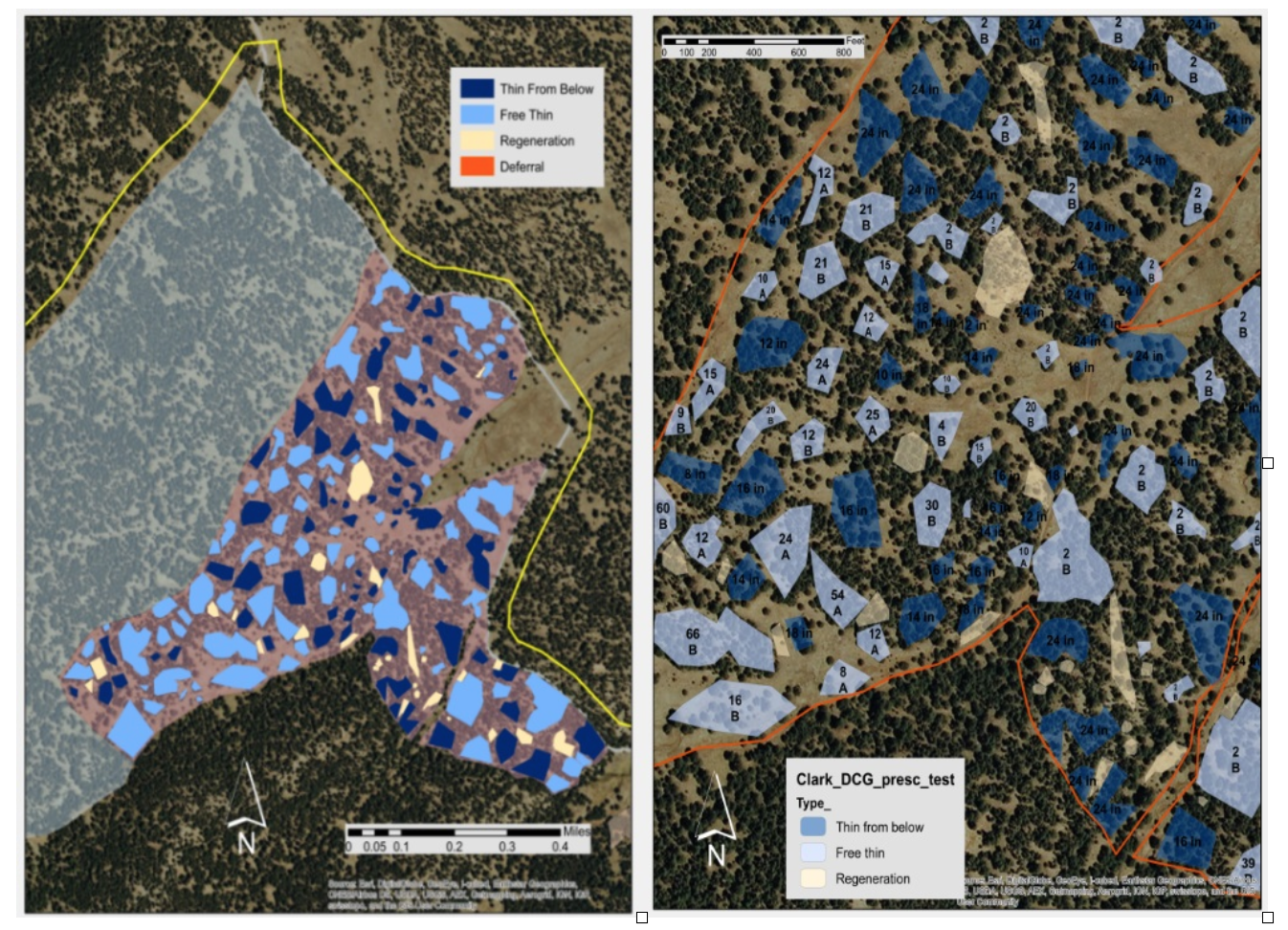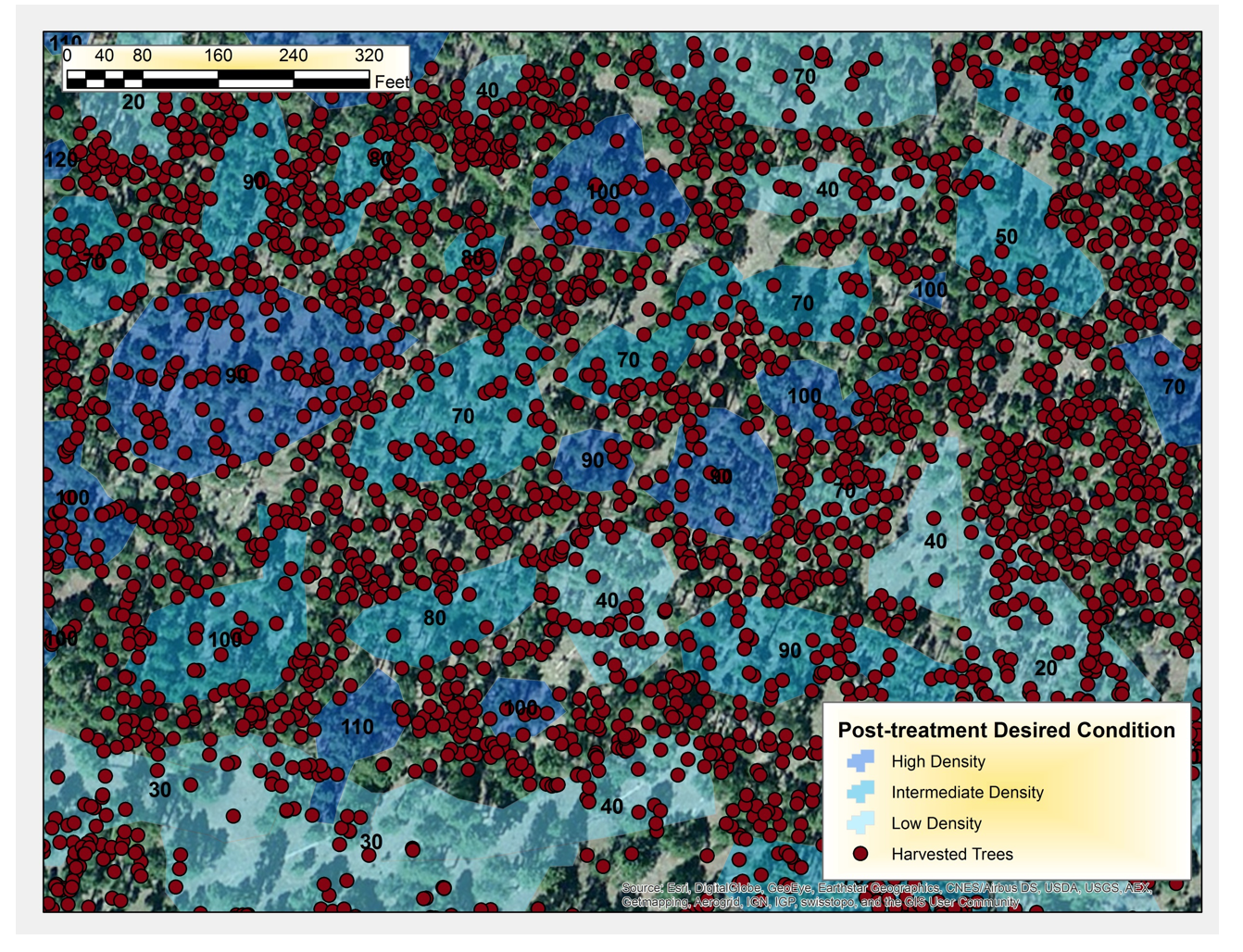Disruptive Technologies for the Forestry Sector
Digital Transformation
Digital transformation is the use of digital technologies to replace non-digital ways of forest management and doing business. Examples include the internet of things, big data and analytics, cloud-based computing, satellite imagery and remote sensing. These technologies can be used alone or in combination to reduce the time and cost required to implement forest management activities. Some bottom-up and top-down examples include:
"Bottom-up": Bottom-up data includes data collected from in-situ measurement or estimation using both manual and automated systems. Some innovative ICT-enabled ways in which this is being done for forest management include:
In-situ data collection using mobile platforms may reduce the time required to conduct inventories, but are in the early stages of development. In addition, there are a number of other innovative sensors and telemetry options for monitoring other aspects (e.g. weather, tracking) that can be useful in forest management. Some of these are using innovative technologies such as 3D printing and tracking technologies.
"Top-down": This includes data collected by remote-sensing – e.g. from satellites, planes, or unmanned aerial vehicle (drone) earth observation. These “eyes in the sky” have revolutionized monitoring of the earth and are getting increasingly powerful over time. Some examples include:
Drones (also see potential for community-based monitoring of forests)
Planes: e.g. Carnegie Airborne Observatory
Congo Basin – Satellite Monitoring
LiDAR: LiDAR collects information on the vegetation above the land surface using laser technology. LiDAR data collection is almost always conducted from airborne platforms, which rely on tracing LiDAR pulses across the landscape and combining the data with GIS location data. LiDAR lasers provide information on tree volume, canopy height, and topography. Additional information on LiDAR forestry applications are available here and here.
Silvia Terra Products (Canopy, Plot Reduce, Plot Hound) are software programs that provide one example of how the forestry industry is combining big data, cloud computing, and other modern ICT tools to support forest inventory and analysis.
Automation
Automation is another area of disruption in the forestry sector, as digital technology is applied to manufacture of wood products and other forestry-based manufacturing processes. Robotics, sensors, artificial intelligence (AI), machine learning, RFID tags, biometrics and 3D printing are all technologies that are automating the forestry sector. Automation reduces the number of employees required to perform a particular task, and in theory increases the speed of manufacture and productivity while reducing overall costs.
Robotics and AI are used for a variety of purposes in the wood manufacturing business. Declining costs of these technologies coupled with a lack of labor in wood mills in some areas makes robotics and AI a potentially attractive solution for the wood manufacturing industry, but barriers to adoption, including the imperfect nature of wood, exist. A discussion on current uses of robotics and AI in the wood industry, as well as potential challenges, are available here and here.
Machine Learning is a rapidly-evolving artificial intelligence discipline that helps systems to learn without being explicitly programmed – i.e., which can adapt the programs when exposed to new data.
RFID technology provides for traceability in the wood supply industry, which offers greater control of the production process for wood manufacturers, and the opportunity to participate in new markets via sustainable forestry certification programs that require data on wood supply. RFID stands for radio frequency identification, which uses electromagnetic fields to identify and track tags that are attached to specific objects, such as a log. RFID tags contain digital information about the product in question, and, for the wood industry specifically, provide for tracing in all steps of the wood supply chain, from harvesting to processing and use. A more detailed discussion on potential RFID applications in forestry is available here. An analysis completed by the US Forest Service on the use of RFID for tree inventory requirements is available here.
Forest Tree Genomics
According to the Human Genome Project, “A genome is an organism’s complete set of DNA, including all of its genes. Each genome contains all of the information needed to build and maintain that organism.” Genomics involves the structure, function and mapping of genomes, and makes gene manipulation and the genetic medication and/or improvement of species possible. The first forest tree genome sequence was mapped in 2006, and since that time additional developments have occurred in this field that could potentially help forests to adapt to current and future challenges, including changes in temperature and precipitation due to climate change, the demand for more wood products from a burgeoning world population, and pests. For example, as discussed here, the introduction of the emerald ash borer in the US in 2002, an invasive species from Asia, had spread to 31 states by May 2018 and decimated five species of ash trees. Similarly, an invasive fungal species is attaching whitebark pine in the US and Canada, and over half of the whitebark pine in these countries have died. A more detailed treatment on forest tree genomics is available here and here. A discussion of the potential application of forest tree genomics to maintain the health of America’s forests is available here.
Forest Fire Management Example: The Nature Conservancy’s Four Forest Restoration Initiative
A significant aspect of forest fire management involves determining the spatial location of forest assets and optimizing thinning plans. Traditionally, this was done through manual survey, for example, individually spray-painting trees to mark them for felling by logging crews. This type of forest thinning work is crucial to the health of the forest and reducing wildfire risk, but is time-consuming, costly, and inefficient for very large forested areas. Technology can be extremely helpful in this case, reducing the time and effort required to assess forest stands, and increasing the probability that stands will be thinned appropriately to mitigate wildfire risk.
Spurred by the recent Wallow and Monument fires in the Southwest U.S., The Nature Conservancy has been testing the application of technology to forest restoration through its Four Forest Restoration Initiative, the largest forest restoration effort in the country that aims to thin 300,000 acres of trees (Ponderosa pine) in the next 10 years and 1 million acres in total, in order to restore and maintain health of the forest system.
Video: The Monument Fire in Arizona was one of the state’s worst.
Technology in testing includes:
- In-cab GPS to allow wood harvesters to track the date, time and location of tree to be cut;
- Bar codes to track the supply chain of individual trees; and
- Designing thinning patterns using infrared technology that can assess foliage location and density.
- TNC is implementing a Digital Restoration Guide for foresters to manage the Ponderosa pine forest, which has experienced massive forest fires in the last decade. Instead of manually marking individual trees for thinning, forestry teams use tablets to record information digitally. A pilot project on 327 acres found that the digital system reduced the cost of work by over 50% and was at least 5 times faster. (Source: https://techcrunch.com/2017/04/19/nature-conservancy-gives-forest-management-a-digital-makeover/)

